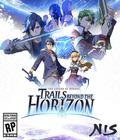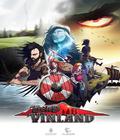Buy Dead in Vinland
Little-known fact about the Vikings: They were surprisingly excellent chefs and farmers. These skills sure came in handy for Eirik, our unwilling hero, and his exiled family when they found themselves in a foreign land with few of their possessions. There, on land that is likely Eastern Canada, they must mourn the loss of their home and start a new life. To do that, they must first survive.
Similar to CCCP's prequel game, Dead in Bermuda, in which a group of plane crash survivors are left to fend for themselves on an island, in Dead in Vinland, survival is the name of the game, but it won't come easy. Not long after your Viking family sets up camp in this new, mysterious world, Bjorn, a terrifying warlord who seems to be in charge of a population of equally terrifying marauders, engages you in battle. You will lose, and he will make his demands. He also collects skulls ... so there's that. In short, he's the boss, and you have to appease him and pay his weekly bounty — potable water, wood, etc. — or he will, presumably, gather your family's skulls to add to his growing collection.
Of course, this throws an ax into your survival plans, especially if you don't plan out your camp efficiently and accidentally kill a family member via dehydration to meet the bounty. Not that I ever did that .....
That was a hard lesson that I only had to learn once — OK, three times. Loosely defined, survival means continuing to exist in a seemingly hopeless situation, and to do that, the family needs to work quickly. Fail to do so, and one of your family members will die, effectively ending your game. Whether you've survived two days or eight days, you start over.
A round of turns takes place over a day, and it is split into three parts: two "work" turns, and one "end of day" turn. To start, you only have your family of four: Eirik, dad; Blodeuwedd, mom; Moira, Blodeuwedd's sister; and Kari, Blodeuwedd and Eirik's daughter. You can find others as you play, such as Knut, the thick-skinned crafter, and his wife, Solveig, who is also adept at scavenging. The four need to split the daily tasks, which are necessary to keep your family alive with each passing day. These tasks — exploring the territory, gathering supplies from the shipwreck, scavenging for water, and building and improving upon your camp — are essential to your survival. At the end of the day, your family's overall happiness is just as important, and your choices can greatly and negatively affect that. In fact, my first death was not due to dehydration, hunger or sickness. Moira, Blodeuwedd's sister, died as a result of hanging because she was so depressed that she couldn't go on any longer.
Each time you lose a game, it doesn't take long to learn what you did wrong.
When your tasks for the day are complete, it's time to fill up the water canteen, have some fish or cheese (while it lasts), and bond with the family before turning in for the night. This part of the game was really entertaining, especially when the resources were getting low and you didn't have enough to feed or water your whole crew, so you had to be choosy about who would be gifted with water or who would get cooked food versus spoiled food — or, sometimes, who would get food at all.
The family dynamic is so well thought-out. At the head of the family are guilt-ridden dad, Eirik, a strong yet self-deprecating Viking and unwilling hero, and his Welsh princess wife, the nurturing but sometimes overbearing Blodeuwedd. Throughout the story, they lead their daughter Kari, a restless adventurer who clearly doesn't respect her mother, and Blodeuwedd's sister, Moira, whose healing powers and wildness have labeled her as a witch, as they navigate this new world. Their relationships changed every evening, and their affection for each other grew and diminished in a similar way to the Dragon Age series: +5 love would go from Kari to Blodeuwedd on one night and -5 on another night. Some of these shifts in affection are under your control, so choose your answers wisely.
On that note, along with it being important that you thoroughly read the text in this game, I strongly advise that you play through the tutorial. It's worthwhile and lays out the story nicely. There are many functions that require you to know what you're doing, and I can only imagine the frustration and agony that must occur for those who attempt it without playing the tutorial, especially if they increase the difficulty.
Full disclosure: As I was learning the game, I only played on the recommended difficulty. The negative effects of playing on higher difficulties are clearly outlined prior to you selecting the option, which is nice. Consider yourselves warned.
Much like any other RPG, each member has a certain set of skills. Kari is a great explorer and adept when it comes to stealth, while Blodeuwedd is perfect for scavenging water. These skill sets are important to keep in mind as you select which Viking will complete each task. You can increase certain skills as you level up, but it comes at a cost to another attribute. I found this to be a good way of balancing out your characters and adjusting your decisions based on their individual needs.
These special skills also come in handy as the game unfolds because as your explorer discovers new areas, a little mystery or treasure is waiting to be discovered. This may be an abandoned chest filled with goods. It might be a tree trunk with gooey sap that Moira claims will heal wounds. You need to read the text and pay attention. Choose the wrong person to complete the search or gather the material, and you could lose it. What's more, you could end up sick or injured as a result. How? Ability checks.
As in Dungeons and Dragons, you're required to roll the occasional ability check in this title, and it can be a game-changer. I've never come across a game that manages to incorporate some RNG aspects while also making your choices seriously matter, but Dead in Vinland does a pretty good job of that.
How have we gotten this far without even mentioning the combat system? Hands down, the combat is the best part of the game. It's very similar to the combat in Darkest Dungeon, which was also a great game, except that the combat in Dead in Vinland is simpler. Usually, your explorer happens upon a group of thugs (or "knife guys" in some cases, which was admittedly a little out of place) in the middle of a work turn, and you decide on your remaining two fighters.
Each character has a distinct role in a combat scenario. Appropriately, Blodeuwedd is a protector who can shield her allies in combat and taunt enemies away from her family. Eirick is a fighter, while Kari is an accurate and deadly rogue, excelling at both ranged and melee combat. Moira is a token support class, buffing her allies and debuffing enemies to her family's advantage. As we have mentioned Dungeons and Dragons already, this game also uses an initiative roll system, which is helpful when choosing your allies. Choosing a lower-initiative character may mean that your family dies around you before you even step into the ring.
Dead in Vinland could be described as a turn-based resource management game, but it's so much more than that. There are elements of RPG and ability checks, which are very Dungeons and Dragons-esque and appeal to the vintage gamer. The story is told in a way that complements the roguelike nature of the adventure game, while the turn-based gameplay minimizes a lot of the trivialities that often accompany RPGs. This game offers so many good options for ease of play, such as the option to click to fast-forward, a command that is helpful and also clearly stated when it's available. The only cons were the music, which I found to be repetitive so I turned it off. The other issue was that every time you start over, you have to speed through the same text to get back to where you were. Perhaps that's incentive to not lose!
Dead in Vinland is easily one of the best games I've played, and its addictiveness is real. Every time you die, you'll reach for that "new game" button, like every other addict before you. Fans of survival managment games should snag Dead in Vinland, which is a steal at $20. The most important thing to remember in Dead in Vinland is that it is designed to defeat you but not destroy you. As the Vikings would say, "Fear not death, for the hour of your doom is set, and none may escape it."
Score: 8.9/10
More articles about Dead In Vinland











 Dead In Vinland is a survival management game set on a faraway unknown land, where you must lead Eirik and his family on their quest to survive.
Dead In Vinland is a survival management game set on a faraway unknown land, where you must lead Eirik and his family on their quest to survive.















































